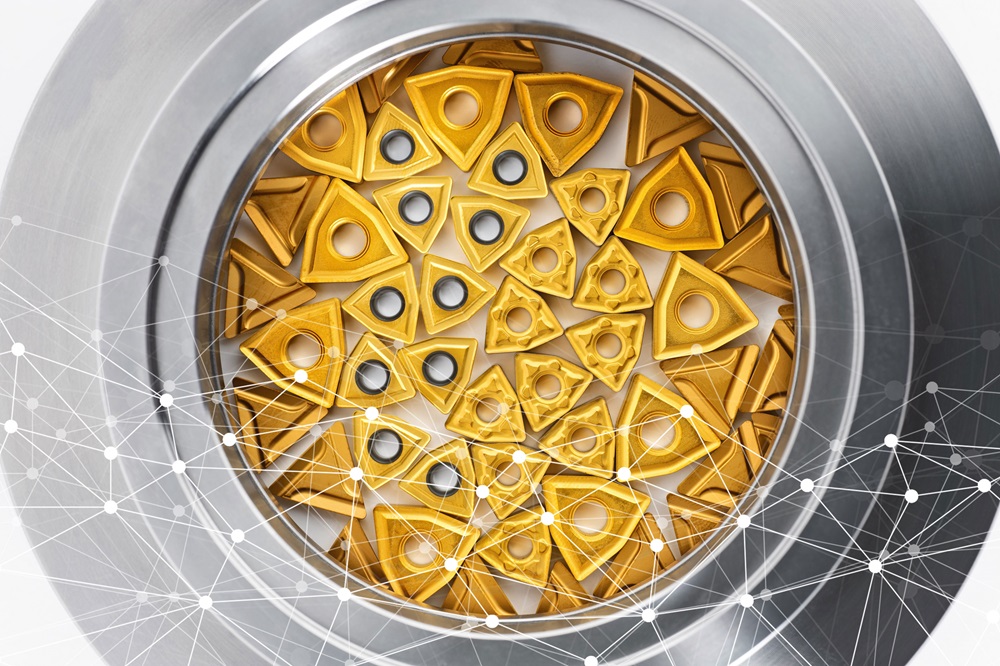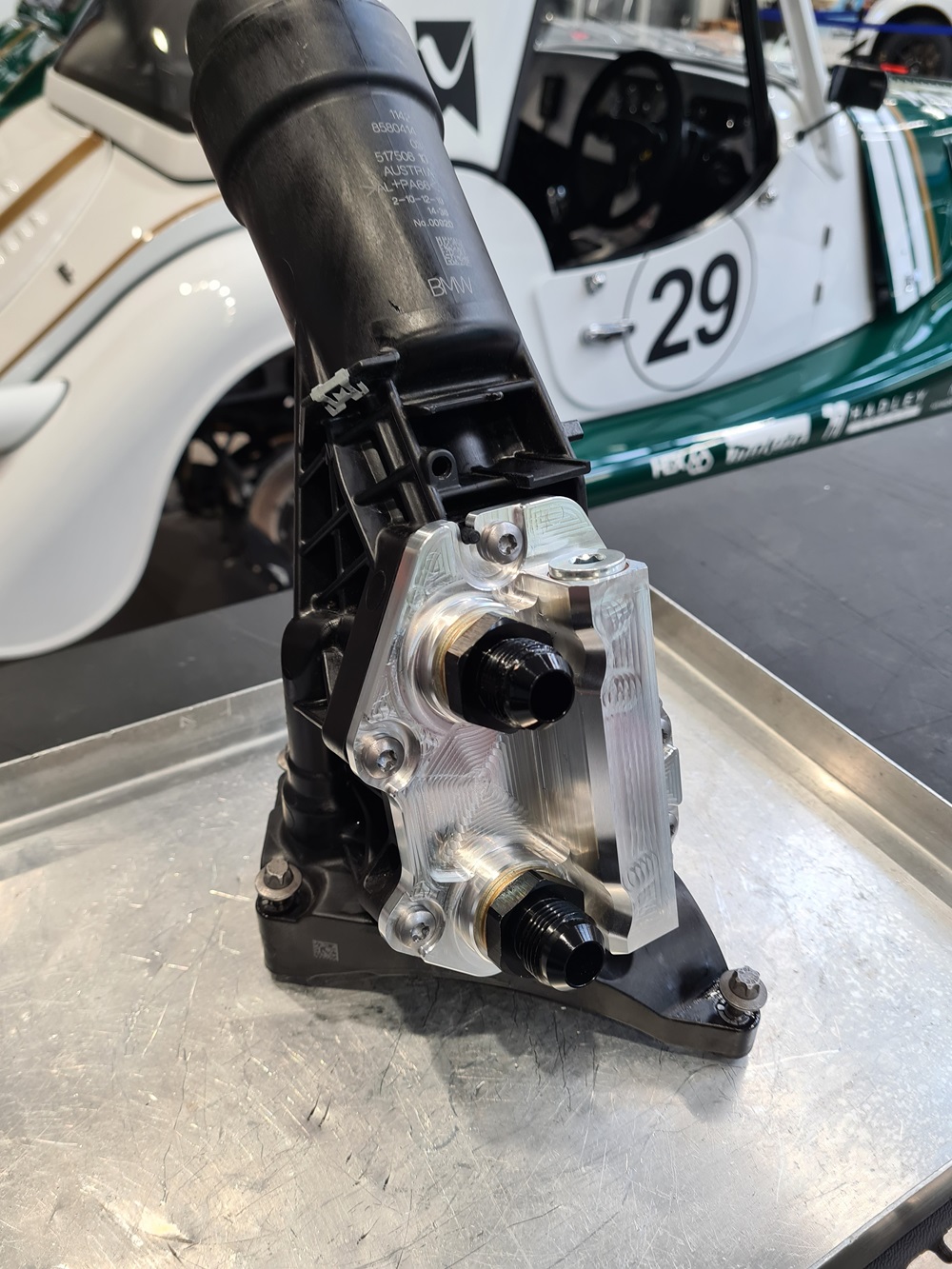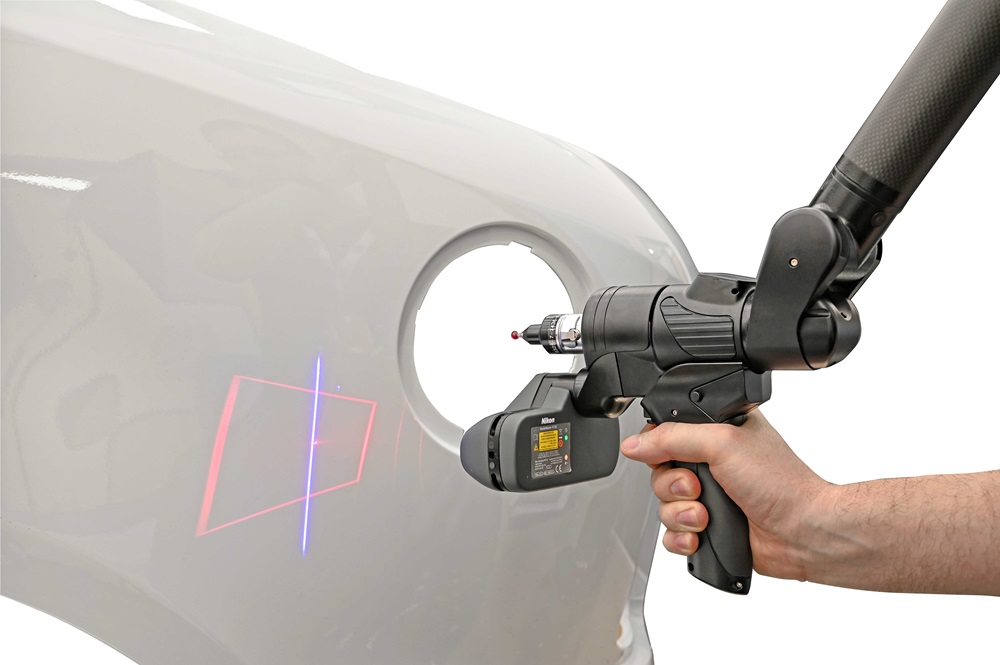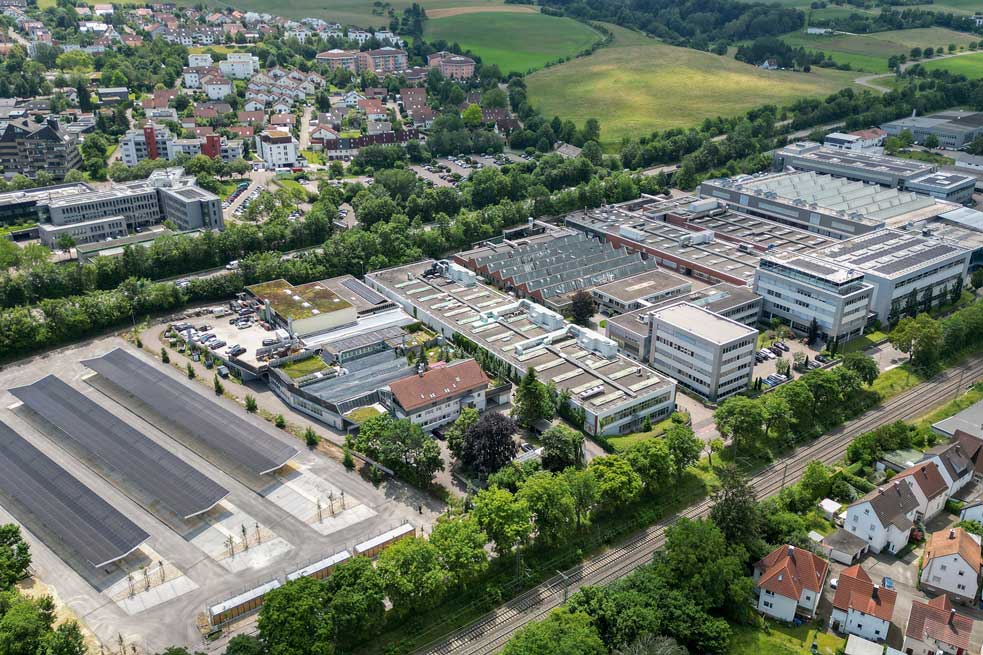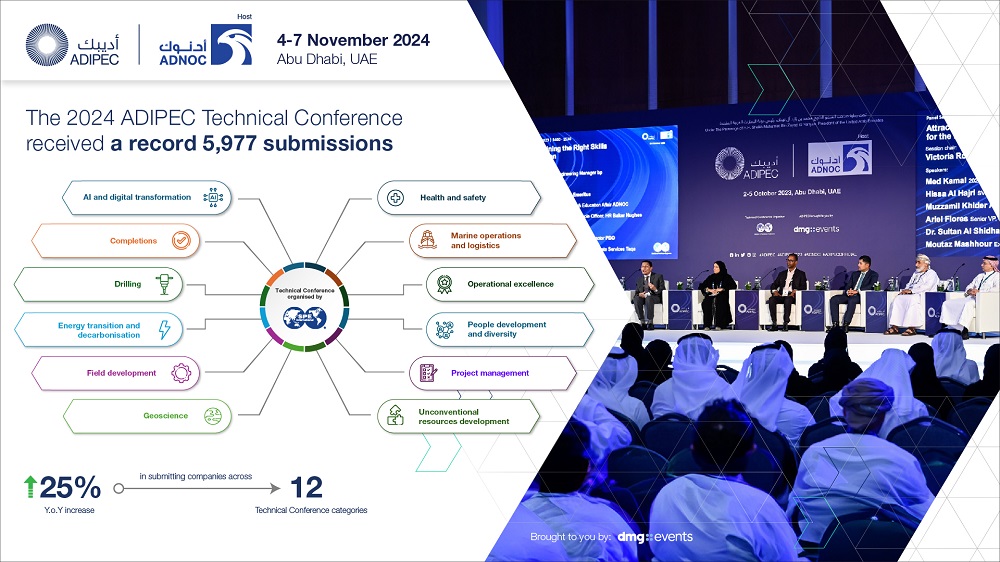Careful quality control is essential to ensure that only flawless indexable inserts leave production and meet high durability and reliability requirements. A flagship project by automation and measurement technology specialists Xactools and IDS Imaging Development Systems demonstrates how AI can help visual inspection make quantum leaps. The companies developed a fully automated handling and inspection system for a global manufacturer of indexable inserts based in Scandinavia.
A total of eight high-resolution industrial cameras and two spider robots handle and inspect the indexable inserts for defects, which monitor and load three rotary table nests and one pin pallet each. DENKnet’s AI forms the heart of the complex image processing system between cameras, robots and a multi-GPU computing rack to help drive zero-defect production.
The indexable insert manufacturer has around 2800 products in its portfolio, divided into almost 100 geometry families. The aim was to automate handling and defect inspection for them all.
The first challenge resulted from the numerous colours, whereby the AI required extreme training to variations and lighting conditions. But in addition to visual appearance, it is also about insert geometry. Categories such as triangle, rectangle, rhombus and square can be found in countless variations. Around 20 to 30 images were needed to teach each geometry family.
The team integrated AI into the production line in just a few months, achieving almost perfectly reliable AI results for checking right from the start.
“Indexable inserts identified as defective are sorted and grouped according to the size and position of the defect,” says Daniel Routschka, sales manager – AI at IDS Imaging Development Systems. “The AI image analysis detects more than 99% of production errors.”
More information https://en.ids-imaging.com






